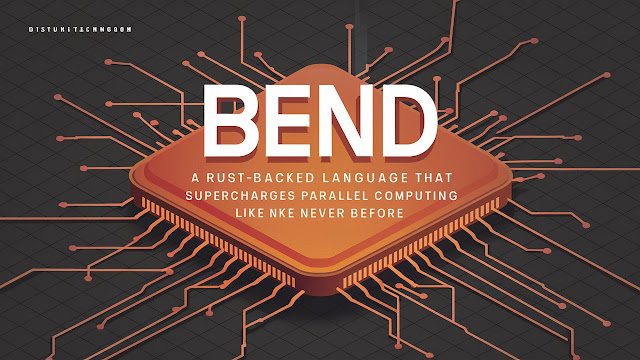Bend — A Rust-Backed Language That Supercharges Parallel Computing Like Never Before
Introduction:
In the landscape of programming languages, innovation often springs from the intersection of necessity and ingenuity. As computing demands escalate and parallelism becomes increasingly pivotal, a new contender emerges — Bend. Born from the robustness of Rust and tailored for parallelism, Bend heralds a new era in concurrent computing. This article delves into the intricacies of Bend, exploring its design principles, features, and the potential it holds for revolutionizing parallel computing.
The Genesis of Bend:
Bend is not merely a new programming language; it's a response to the evolving needs of modern computing. Conceived by a team of visionary developers, Bend draws inspiration from Rust's safety, performance, and concurrency model. However, its primary focus lies in elevating parallelism to unprecedented levels of efficiency and accessibility.
Rust, renowned for its memory safety guarantees and fearless concurrency, provided a fertile ground for Bend's inception. By leveraging Rust's core principles, Bend inherits a strong foundation built on safety, performance, and concurrency — qualities imperative for contemporary computing paradigms.
Key Design Principles:
At the heart of Bend lies a set of design principles meticulously crafted to address the challenges of parallel computing:
Safety First: Like its predecessor Rust, safety remains paramount in Bend. Memory safety, data race prevention, and thread safety are ingrained into the language's DNA, ensuring robustness and reliability in parallel execution.
Performance Optimization: Bend doesn't compromise on performance. Its syntax and compiler are engineered to extract maximum parallelism from hardware architectures, minimizing overhead and maximizing throughput.
Simplicity and Expressiveness: While Bend empowers developers with powerful parallel constructs, it maintains a clean and expressive syntax. Concepts such as concurrency, synchronization, and parallelism are seamlessly integrated into the language, making complex parallel tasks more approachable.
Compatibility with Rust Ecosystem: Bend is designed to complement Rust, not compete with it. Interoperability with existing Rust libraries and tools ensures a smooth transition for developers familiar with Rust, fostering adoption and community growth.
Features of Bend:
Bend introduces a plethora of features tailored to expedite parallel computing:
Concurrency Primitives: Bend provides intuitive constructs for spawning lightweight concurrent tasks, facilitating seamless parallelism at the granularity of functions or closures.
Parallel Iteration: Leveraging Rust's iterator model, Bend offers parallel iterators that automatically distribute workloads across multiple cores, enabling efficient parallel processing of collections.
Data Parallelism: With built-in support for SIMD (Single Instruction, Multiple Data) operations, Bend empowers developers to exploit the inherent parallelism in data-intensive computations, accelerating performance on SIMD-enabled hardware.
Task Scheduling: Bend's task scheduler dynamically allocates computing resources, orchestrating the execution of concurrent tasks for optimal throughput and load balancing.
Async-Await: Borrowing from Rust's async-await paradigm, Bend simplifies asynchronous programming by allowing developers to write non-blocking, concurrent code with ease.
The Road Ahead:
As Bend gains traction in the programming community, its evolution holds immense promise for the future of parallel computing:
Ecosystem Growth: With support for existing Rust libraries and frameworks, Bend is poised to benefit from Rust's vibrant ecosystem, fostering the development of parallel computing solutions across diverse domains.
Performance Benchmarking: Real-world performance benchmarks will be crucial in validating Bend's efficacy in accelerating parallel workloads. Comparative studies against established parallel computing languages will shed light on Bend's strengths and areas for improvement.
Community Engagement: The success of Bend hinges on community engagement and collaboration. Open-source contributions, documentation efforts, and knowledge sharing will be instrumental in shaping Bend's trajectory and ensuring its relevance in the rapidly evolving landscape of parallel computing.
Conclusion: Bend represents a bold leap forward in the realm of parallel programming languages. By combining the safety and performance of Rust with specialized constructs for parallelism, Bend unlocks new possibilities in concurrent computing. As developers embrace Bend and harness its capabilities, the horizon of parallel computing will undoubtedly expand, paving the way for innovation and breakthroughs in fields ranging from scientific simulations to real-time systems. In the journey towards scalable, efficient parallelism, Bend stands poised as a potent catalyst, propelling computing into a realm where parallelism reigns supreme.


